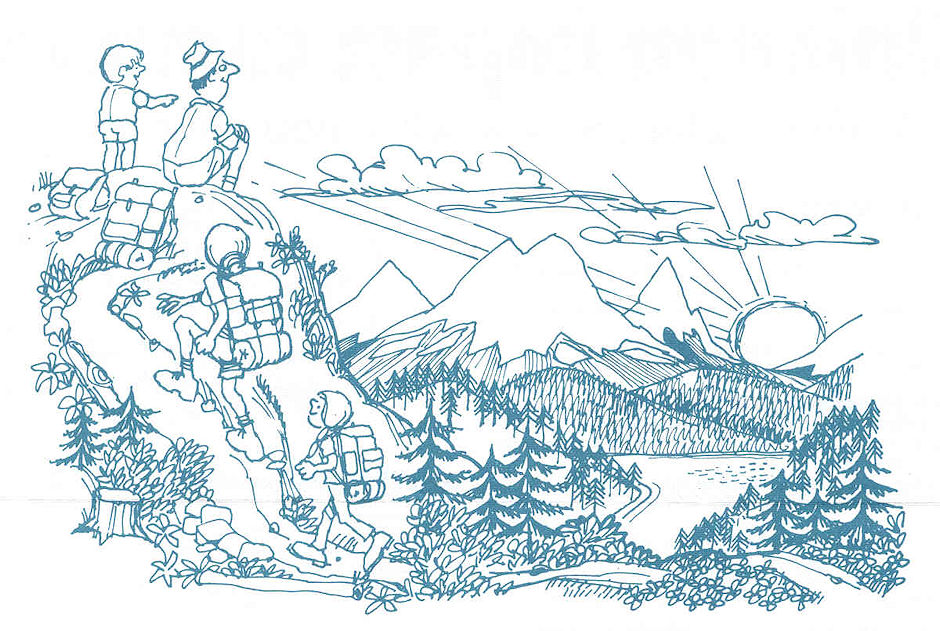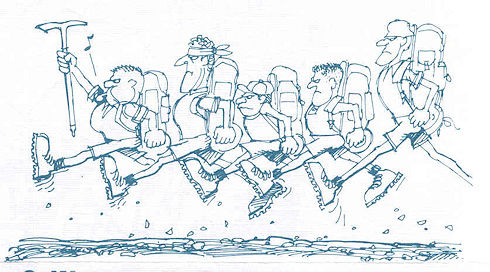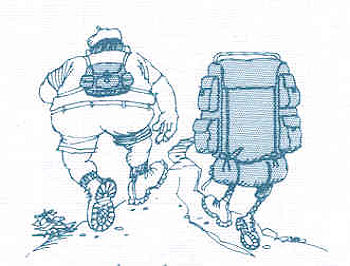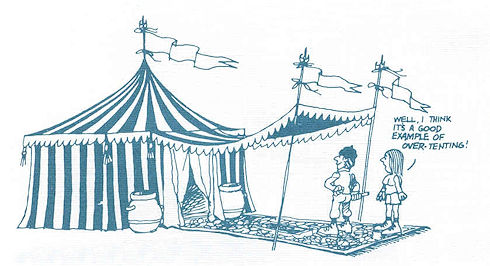
Wilderness environments are extremely important as places for recreation, allowing us to escape from the pressures of modern living. They are a special place where nature comes first. When you use these wilderness and backcountry areas as a place of retreat and renewal, please practice techniques that allow you to travel lightly, leaving them in their natural state to be enjoyed by future travelers.
1. Prepare well
2. Management guidelines
Wilderness is managed for reasons of preservation and solitude. We need such natural places for study, for measuring the forces of natural change and dynamics, and as a place to renew the human spirit. Land managers have established rules and regulations governing group size, fires, cans and bottles, mechanized vehicles and basic conduct to help protect the land and the quality of experience for users. Please follow their guidelines.

3. Trekking into the wilderness
Heavy, lug-soled boots have an adverse impact on fragile terrain. Consider wearing well-cushioned running shoes whenever it is safe and conditions permit. It is strongly advised that you carry a light pair of boots for safety reasons. Use light footwear in camp.
Cutting switchbacks tramples vegetation and leads to erosion. Use established trails when possible; cross-country travel requires experience and an extra sensitive backcountry traveler.
4. Camping
Careful selection of campsites helps preserve the atmosphere of solitude even in popular areas. Choose your site thoughtfully and use it lightly, leaving it in as natural a state as possible.
5. Garbage
Be sure to burn or carry out all of your food scraps and packaging. Buried garbage won't stay that way for long, and may be dangerous to small animals. If you fish, be sure to burn or carry out the entrails. If local land managers give you the go-ahead, consider cleaning up a trashy area and caching the garbage for later removal by a ranger. Do this only if you have made arrangements in advance for the removal.
6. Sanitation

Your family cat can teach you a valuable lesson about wilderness hygiene; how to use a cat-hole. Proceed with trowel in hand to an area at least 100 feet away from water sources, trails and camp. After carefully removing the surface duff, dig a hole several inches into the dirt, put all of your human wastes and toilet paper into the hole, then replace dirt and duff.
In winter, select a flat area away from drainages. This prevents the waste from entering a water source as the snow melts. Assuming the area is safe from fire hazard, carefully burn your toilet paper during the wet winter months.
7. Washing yourself
Even when biodegradable, soap is a stress on the environment, so do as much of your cleanup as possible with soapless, hot water. When using any soap to wash yourself or your dishes, use it well away from natural water sources; pour it into highly absorbent ground.
8. Washing dishes
9. Water pollution
The increasing occurrence of backcountry dysentery caused by Giardia clearly demonstrates the impact water pollution has in the wilds. Giardia thrives in water that has been contaminated with animal or human waste. Consider most backcountry water to be potentially contaminated even though it appears clean and may be running rapidly. To ensure its safety, boil or filter water, or use a chemical water purification agent. Clean water is vital to human and animal health; do everything you can to lessen your impact on water sources.
10. Fires
Even though we all enjoy fires, most wildlands are feeling the effects of too many. Wilderness is being depleted of much of its beauty by eager fuel hunters. Even when a fire is possible, consider your options; when you forego a fire you may be richly rewarded by interesting sights and sounds usually hidden by the fire's draw.
Wood fires are completely forbidden in some areas. Check the rules with the land manager prior to planning your trip.
11. Smoking
12. Mountain bikes
Bicycles are prohibited in Wilderness Areas. Remember that bicycling on public lands is subject to local agency rules; courtesy will help all visitors have a pleasant experience.

13. Impact on other users
If you recall backcountry trips you've taken that gave you peace and solitude, you will know the kind of thoughtful conduct needed to minimize your impact on others. Tens of millions use America's backcountry every year, but there is still room for a quality experience provided we are conscientious visitors.
Pets are prohibited in many areas. Check with land managers prior to planning your trip.
14. Become involved
Each one of us can have an important and lasting impact on public recreation opportunities by getting involved with conservation efforts. Many organizations sponsor cleanups of wildland areas. Your local outdoor store and land managers can usually connect you with a group or tell you about their own programs.
Please help protect our wildlands by sharing these minimum impact techniques with your friends and associates.
See also Leave No Trace Seven Principles

Illustrations by Bob Cram